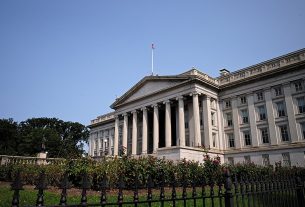Lead author Olivia St-Laurent explains why she and her co-authors of the new article advocate for a novel approach to environmental tree planting, benefitting people and nature by prioritizing biodiversity conservation.
Everywhere, governments are making commitments to stop or slow the loss of local biological diversity and to restore degraded ecosystems. In megadiverse Australia, endemic species represent 85% of the continent’s biodiversity. These species, found nowhere else on the planet, are important to national heritage and to the identity and culture of the continent’s indigenous peoples.
The present and future value of biodiversity
Safeguarding biological heritage is only one reason for protecting biodiversity. Certain species contribute to what we call ‘option value’; the existence of species that could potentially provide medical and economic benefits in the future should not go extinct. Eucalypts are perceived to have high option value. This clade represents over 900 named tree species which dominate the canopies of Australian forests.
Some eucalypt species are highly common, while others are incredibly rare, endemic (restricted to small natural ranges), evolutionarily distinct (more unique in terms of evolutionary relationship with other species), or even threatened with extinction. These are the eucalypt species that need to be prioritized for conservation, for the sake of people and nature.
Environmental tree planting fails to benefit local biodiversity
Although the benefits of conserving biodiversity are recognized, tree planting, a globally-adopted nature-based solution to offsetting greenhouse gasses, currently misses the opportunity to conserve species of interest. In an effort to achieve net zero carbon emissions by 2050, the primary goal of environmental tree planting is to maximize carbon sequestration.
We took a closer look at the eucalypt species selected for planting in Australia. We found that the species most frequently observed in their natural habitats are also the most commonly planted in environmental tree planting initiatives. In over 1000 locations throughout Australia, the same six eucalypt species were planted. These species are not at risk of extinction given their large natural distributions.
Under 1% of the species planted in environmental tree planting initiatives are highly rare or evolutionarily distinct, while 11% are highly endemic. These results suggested that eucalypt species most vulnerable to extinction are seldomly selected for environmental tree plantings and confirmed our hypothesis that biodiversity conservation comes at the expense of carbon sequestration.

What happens when biodiversity conservation is the primary goal of tree planting?
To answer this question, we created five different tree planting scenarios that spanned all of Australia. When identifying species to plant in any given area deemed suitable for tree planting, we prioritized eucalypts most in need of conservation.
In each 25km2 location throughout Australia, we determined which species could naturally occur in that location at present, and until 2085 (our study accounted for the effects of climate change on habitat suitability). We selected five priority species for planting in every location based on different indicators of conservation importance (rarity, extinction risk, endemism and evolutionary distinctiveness).
Species of conservation priority gain significant benefits
Each of our five conservation-focused planting scenarios outperformed a business-as-usual approach to tree planting in terms of benefiting species of conservation interest, by increasing their distribution and reducing their vulnerability to extinction.
Measuring outcomes under the full adoption of our scenarios, which is highly unlikely given socio-economic limitations, is nonetheless useful for showcasing the extent of what is possible. Species of conservation interest could occupy almost as much area as the average eucalypt species, greatly reducing the extinction risk these species currently face.

Our framework for selecting species to plant based on a range of conservation goals can serve as a guide for future environmental tree planting initiatives. We showed that when biodiversity conservation is the primary goal, substantial benefits are derived for those species that should be prioritized for conservation.
Currently, it is not common practice to assess the outcomes of tree planting in terms of benefits delivered to the species planted themselves (outcomes are generally measured in terms of benefits to people). We showed that conservation-focused tree planting has the potential to benefit both people and nature, byadvancing our goal of safeguarding biodiversity while still contributing to carbon capture.
